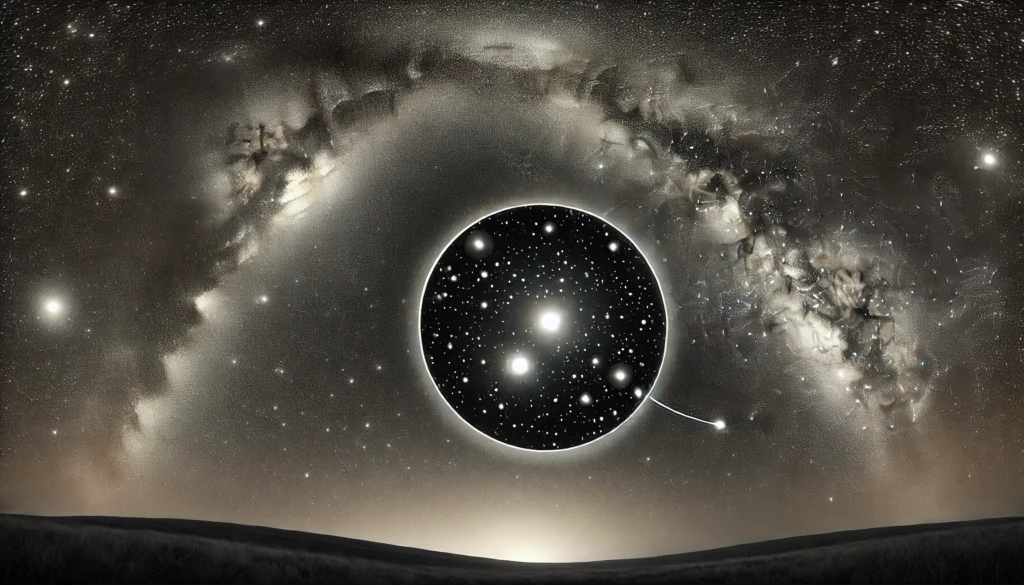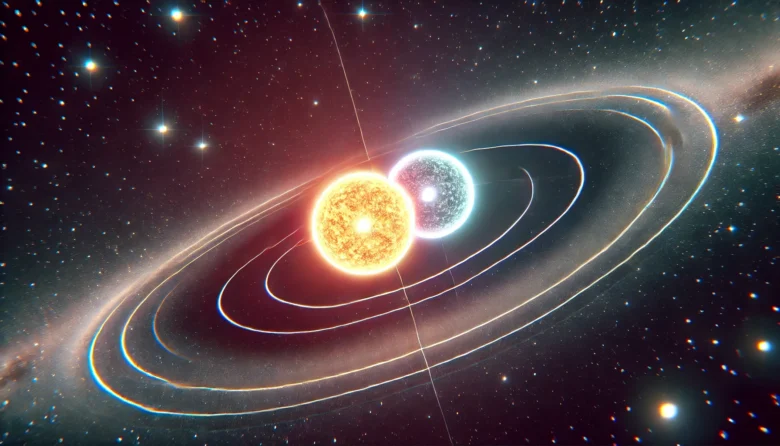Imagine looking up at the night sky and realizing that some of those tiny twinkling stars aren’t single stars at all but pairs of stars dancing around each other. These are called binary star systems, and they’re far more common in the universe than you might think. In fact, about half of all stars are part of such a system. But what exactly are binary star systems, and how do they work? In this blog, we’ll explore the fascinating dynamics of binary star systems, shedding light on how these stellar partnerships form, evolve, and sometimes even end in dramatic fashion.
What Are Binary Star Systems?
A binary star system consists of a pair of stars that revolve around a shared centre of mass. Unlike our Sun, which is a solitary star, many stars in the universe exist in pairs, bound together by gravity. These systems can differ significantly in terms of the distance separating the stars, their sizes, and the stages of their lifecycles. Some binary pairs are so close that they share material, while others are separated by vast distances, making them appear as single points of light when viewed from Earth.

Types of Binary Star Systems
Binary star systems are categorized based on the methods we use to observe them:
Visual Binaries: These are binary systems where the two stars are far enough apart that they can be resolved as separate entities through a telescope. An example is the famous star system Albireo in the constellation Cygnus. To the unaided eye, it looks like a single star, but closer examination reveals two distinct stars—a bright orange giant and a fainter blue companion—when observed through a telescope.
Spectroscopic Binaries: In these systems, the stars are too close to be distinguished individually through a telescope. Instead, their existence is inferred by observing the Doppler shifts in their spectral lines. As the stars move towards or away from us in their orbits, the light they emit shifts in wavelength, revealing the presence of two stars. A well-known spectroscopic binary is Algol, also known as the “Demon Star,” in the constellation Perseus.
Eclipsing Binaries: These systems are oriented such that one star passes in front of the other from our viewpoint, causing the system’s brightness to periodically dip. This periodic dimming provides valuable information about the stars’ sizes, masses, and orbits. A classic example is the star system Beta Lyrae, where the two stars are so close that their shapes are distorted due to mutual gravitational forces.
Astrometric Binaries: Sometimes, we can only detect one star in a binary system, but its motion indicates the presence of an unseen companion. The visible star appears to “wobble” as it orbits around the common centre of mass. This wobble can be detected through precise measurements, revealing the existence of the binary companion.
How Binary Star Systems Form
Binary star systems are believed to form similarly to single stars, originating from the collapse of a gas and dust cloud. However, in the case of binaries, the initial cloud may fragment into two smaller clumps that form stars, or a single clump may break into two. The exact process depends on the initial conditions, such as the rotation speed of the cloud and its overall mass. Over time, these two protostars evolve, either staying close to each other or moving apart, depending on their initial angular momentum.
The Dynamics of Binary Orbits
The orbits of stars in a binary system are governed by the laws of gravity, specifically Newton’s law of universal gravitation. The distance between the two stars and their masses determines the nature of their orbits, which can range from nearly circular to highly elliptical.
Circular Orbits: In a perfectly circular orbit, the distance between the two stars remains constant. This type of orbit is relatively stable and common among binary systems where the stars form together from the same cloud of material.
Elliptical Orbits: When the orbit is elliptical, the distance between the stars varies throughout the orbit. A well-known example of a binary system with an elliptical orbit is the Alpha Centauri system, which is the nearest star system to Earth, which includes the well-known stars Alpha Centauri A, Alpha Centauri B, and the smaller Proxima Centauri.
Roche Lobes and Mass Transfer
One of the most fascinating aspects of binary star systems is the phenomenon of mass transfer, which occurs when one star in the system expands and begins to spill material onto its companion. This typically happens when one of the stars enters the red giant phase of its life. The region around each star where its gravitational pull dominates is called the Roche lobe. If a star expands beyond its Roche lobe, material can flow towards the other star, leading to dramatic changes in both stars’ evolution.
- Case Study: The Algol Paradox Algol is an interesting case of mass transfer within a binary system. In this system, the more massive star has already evolved into a cooler, less massive star, while the less massive companion is still in its main sequence stage. This “paradox” is explained by mass transfer: the initially more massive star transferred much of its mass to its companion, leading to this unexpected configuration.
Evolution of Binary Star Systems
Binary star systems can evolve in various ways depending on the mass and type of the stars involved. Here are a few possible evolutionary paths:
Detached Systems: In detached systems, both stars remain within their Roche lobes, and there is no significant interaction between them. These systems evolve much like single stars.
Semidetached Systems: In these systems, one star fills its Roche lobe and transfers material to its companion. This can lead to the formation of accretion disks, where the transferred material spirals around the receiving star.
Contact Systems: In contact systems, both stars fill their Roche lobes and share a common envelope. These stars are in very close proximity, and their outer layers are physically connected. An example of a contact binary is W Ursae Majoris, where the two stars share a common atmosphere.
Mergers: In some cases, the two stars in a binary system may eventually merge into a single star. This inward spiralling can happen in close binary systems as the stars lose angular momentum through gravitational radiation or interact with a surrounding disk. Such mergers might result in the creation of extraordinarily massive stars or even trigger explosive phenomena like supernovae.
Binary Star Systems and Black Holes
Some binary systems contain exotic objects like neutron stars or black holes. In these systems, a normal star can transfer material onto the compact object, leading to the emission of X-rays as the material is heated to extreme temperatures. These X-ray binaries offer essential insights into how matter behaves under the most extreme conditions in the universe. For instance, the famous X-ray binary Cygnus X-1 is believed to contain a black hole, one of the first to be discovered.
Conclusion
Binary star systems are not just a fascinating curiosity—they are key to understanding many aspects of astrophysics, from star formation to the evolution of galaxies. The dynamics of these stellar pairs offer a window into the complex gravitational interactions that shape our universe. As astronomers continue to study these systems, they uncover new mysteries that challenge our understanding of how stars and their companions live and die.
Whether it’s the delicate dance of a visual binary, the dramatic mass transfer in a close pair, or the intense radiation from a black hole companion, binary star systems remind us that the universe is full of surprises, many of which are hidden in plain sight. Next time you gaze up at the stars, remember that some of them aren’t alone—they’re part of a cosmic duet performing a gravitational ballet across the heavens.
Author’s Note
Thank you for joining me on this journey through the dynamics of binary star systems. I hope this article has sparked your curiosity about the universe and the incredible phenomena it holds. If you’re interested in learning more, check out the resources below. Your thoughts and questions are always welcome!
G.C., Ecosociosphere contributor.





Comments
Your blog is a treasure trove of valuable insights and thought-provoking commentary. Your dedication to your craft is evident in every word you write. Keep up the fantastic work!
Thank you I have just been searching for information approximately this topic for a while and yours is the best I have found out so far However what in regards to the bottom line Are you certain concerning the supply